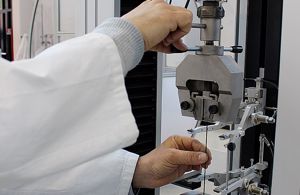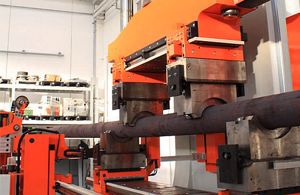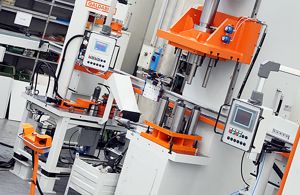-
Product Lines
Material testing machines for quality control

Automatic straightening machines for shafts, profiles

Hydraulic presses, Trimming beading and Automatic production lines

- Company
- Service
- Calibration
- Community
- Contacts
- Library
ASTM D1621, ISO 844
Rigid foams are typically used in the construction industry as sound and thermal insulation. Calculations referenced in this standard include yield points, compressive strength, and compressive modulus. We recommend a Quasar testing machines of 50 kN equipped with compression platens.
As the parallelism of compression platens is really important, it is recommended a spherical seating style compression platen. It is utilized along with a rigid platen. The self-aligning nature of this fixture will maximize the contact area between the platen and the specimen. Swivel seating can be placed on the platen attached to the instrument's base or load cell in the moving crosshead.To reduce the possible affects from off-center loading, it is preferred to place the swivel seat in the base.
When two rigid compression platens are used, it is recommended that a strain gauge device, such as a linear variable displacement transformer (LVDT), is used to minimize error due to compliance from the system. However, our software incorporates a load frame compliance correction calculation, and a deflectometer is not required unless stated so in testing standard.
To make the testing easier, leave a 10 to 30 mm gap between the specimens that allows you to quickly and easily remove the tested samples and position new ones. Our software Labtest preload function automatically moves the upper compression platen down to precisely touch the specimen at a pre-defined load. The preload function reduces the amount of operator interaction, saving time and improving accuracy.